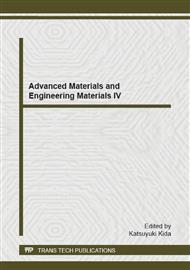p.187
p.191
p.197
p.202
p.211
p.216
p.220
p.224
p.230
Testing of Pre-Stressing Masonry Wall with Using Different Thickness of Anchor Plates
Abstract:
Contribution deals with experimental measurements of deformations in the place exposed to local load caused by additional pre-stressing. The measurements are made at the masonry brick corner built in the laboratory equipment. The laboratory equipment was designed at Faculty of Civil Engineering VŠB – TU Ostrava for measurement tri-axial stress-strain conditions in masonry. In this brick corner one pre-stressing bar is placed. And on the pre-stressing bar is anchored to the anchor plate which transfer pre-stressing forces to the masonry. The thickness of brick corner is 440mm and anchor plate will be used about thickness 10, 20 and 30mm. Mathematical modelling of brick corner is based on finite element method using software ANSYS and then the results are compared with results of laboratory tests. On the basis of these results it should be possible to improve the models and to approach closer to the accurate and at the same time simple procedure for design of pre-stressed masonry.
Info:
Periodical:
Pages:
211-215
Citation:
Online since:
December 2014
Authors:
Keywords:
Price:
Сopyright:
© 2015 Trans Tech Publications Ltd. All Rights Reserved
Share:
Citation:


